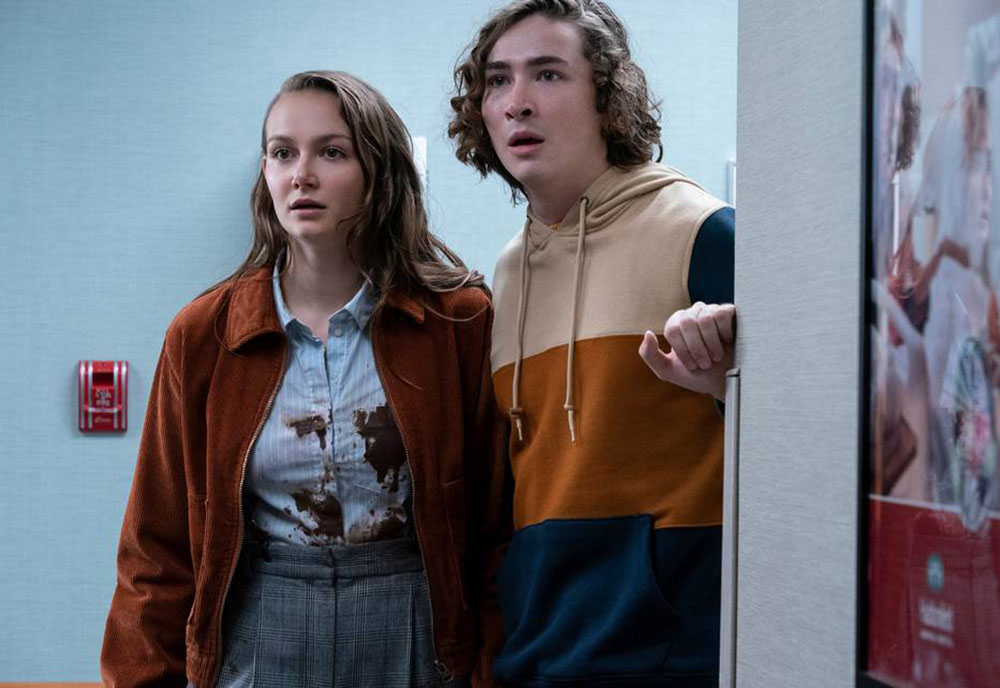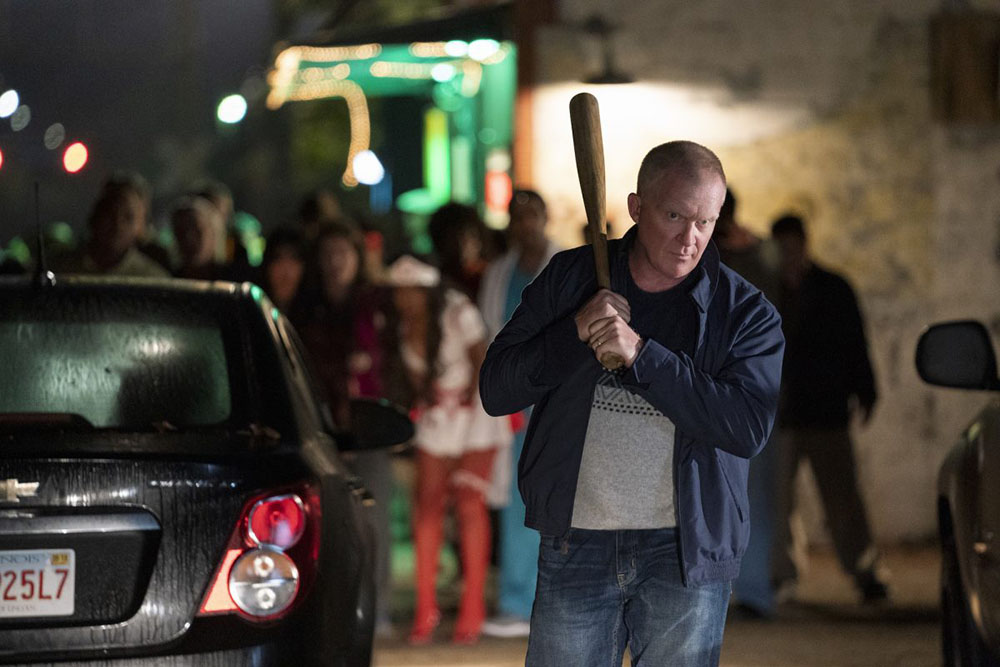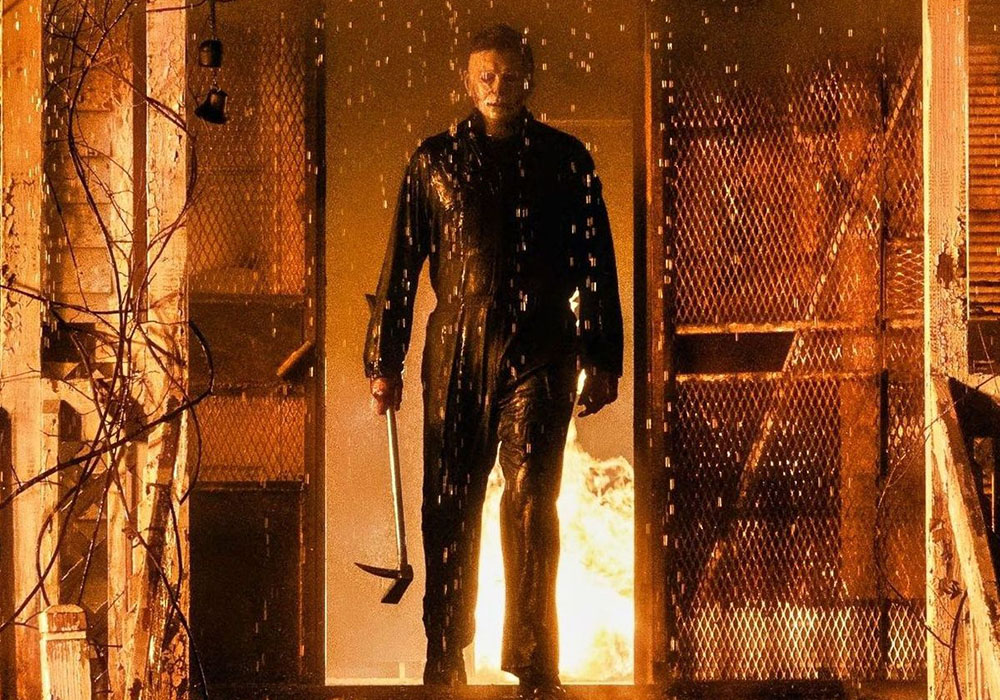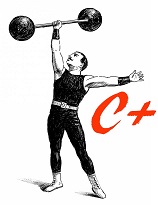David Gordon Green’s “Halloween” franchise has injected life into the legend of Michael Myers, not since played with since Rob Zombie tried his hand with mixed results. If Green’s “Halloween” (2018) reshaped the series by altering the storyline, his latest, “Halloween Kills” continues to mold it into its own entity. This is a fan film; I can’t imagine random moviegoers wandering into the movie with the expectation to be entertained. It’s even hard to call “Halloween Kills” a slasher. The film is about one of horror’s ultimate villains, Michael Myers, but it’s also more. It’s Green’s meditation on evil that won’t die, unaddressed trauma, and, above all else, the panic and pandemonium that accompanies collective tragedy.
The most interesting thing about “Halloween Kills” is the seamless way Green and co-writers Danny McBride and Scott Teems weave together the events of the last film with the events of John Carpenter’s 1978 opener with little degree of separation. The opening credits are dated and vintage; oranges and blacks flow, reminiscent of Carpenter’s vision, along with a score that feels funereal, not exciting.
We see some other things: we see the police officer from the previous entry, Will Patton’s ‘Hawkins’ confronting Myers that fateful night in ’78 and walking away with a huge burden to carry. We see also Lonnie (the boy who bullied Tommy Doyle), played by Tristian Eggerling, seeing The Shape that night and walking away with this life. The whole thing is basked in an aura of creepiness and familiarity; it feels like Carpenter’s camera filming these scenes, not Green’s, and the result is nothing if not authentic.
While he didn’t get the chance to explore his penchant for crafting authentic small town’s in “Halloween,” Green here develops a town we can believe. A gathering at a town bar sews his previous part to this one; it’s here we meet Tommy Doyle (Anthony Michael Hall) and adult Lonnie (Robert Longstreet). News of the newest massacre breaks (this is the same night after all), and the town springs into action. A mob forms; and, unlike the film’s enticing trailer, is less of a high point of the movie but more of a tragedy in itself. So much of the hurt of the original massacre of ’78 is contained in this mob, first and foremost Leigh Brackett, the sheriff from the original who lost his daughter Annie, played by original actor Charles Chypers.

“Halloween Kills” is split into three concurrent parts: the mob, Laurie and Officer Hawkins recovering, and the fractured way that Laurie’s daughter Karen (Judy Greer), her daughter Alison (Andi Matichak), and Alison’s ex-boyfriend Cameron (Dylan Arnold) deal with the tragedy.
All of this takes place amidst Michael’s continuing rampage, which is sardonic and brutal; Green increases the kill count here, as well as Michael’s stalking M.O. Myers dispatches people in varying degrees of brutality and nonchalance. A few deaths (namely a gay couple and a nurse) are protracted and truly awful; but they are not ‘fun’ slasher deaths à la Jason Voorhees, but soul crushing. I don’t think many people will opt to see “Halloween Kills” for ‘fun’ deaths; at least I hope they won’t.
Amidst this whole thing, Green tints his picture with a sense of urgency not seen in other franchise entries. Michael is anywhere and everywhere, which erases the ‘when will he appear?’ question, and the whole town rises up to try and stop him. But—if I may editorialize for a moment—I don’t believe stopping him is the point of this movie. This is a middle segment to a trilogy after all, and “Halloween Ends” hopefully promises to do that. No, what “Halloween Kills” is is a treatise on collective trauma, and the pain and suffering of a whole town that is finally able to find a voice. It’s not done in the healthiest of ways.

We see this as a second mental patient from the bus crash in the previous film fumbles around the town; the mob chases him and likens him for Myers, and only Karen, a Social Worker, tries to approach and help him. Another mob member later remarks that Myers is “turning us into monsters” before apologizing for monstrous actions. Trauma wraps up this town like a wine cork; and when it pops, not the best things happen. But Haddonfield has kept this secret bottled up for too long; they feel it, collectively, for the first time in “Halloween Kills.” Green knows how to show the anguish, and the turmoil, and represents it fully. The ending sequences are appropriate and set up his finalé well; it might disappoint impatient viewers, but they should remembers this is Green’s “Infinity War;” it’s not to conclude until the next picture.
Some words of caution for those who want to see this movie. (A) Don’t watch the trailer if you can help it; it gives away many of the film’s kills, which takes away from their impact and (B) the kills can be very, very brutal. It’s also necessary to say this film departs from the “Halloween” formats of old and creates its own, unique picture. The film can feel feel rushed at times, and yet sometimes feel draggy. But Green keeps the tension up with Myers’ unholy presence, the town’s efforts to stop him, and a portrait that truly feels like an authentic small town. “Halloween Kills” is a patient film, and requires patience. If that’s not your cup of tea, you may want to skip this film; but it will likely enthrall and entice lovers of Michael Myers and all things “Halloween.”
All-in-all, “Halloween Kills” entertains. It’s morbid and morose at times, and sometimes hurts to watch it. But, at the conclusion of this film, it continued to make me think. I can’t remember the last time a slasher made me do that.
“Halloween Kills” is available to watch in theaters or to stream on Peacock.
Support the Site: Consider becoming a sponsor to unlock exclusive, member-only content and help support The Movie Buff!


